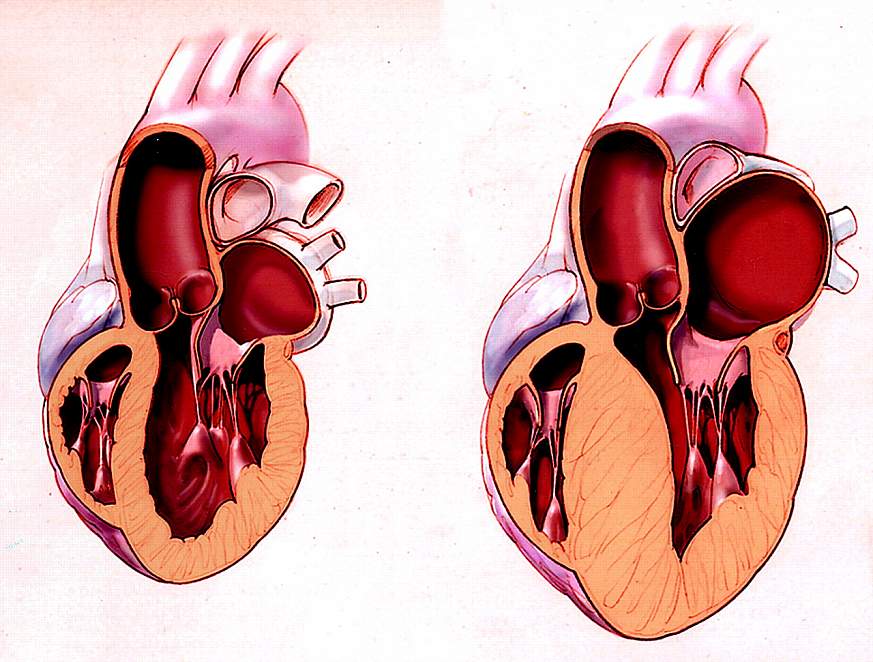You are here
Media Advisory
Tuesday, September 3, 2013
Risk factors identified at diagnosis help predict outcomes for children with rare heart condition

What
A long-term study of children with a complex heart condition called hypertrophic cardiomyopathy (HCM) found that the risk of death or need for immediate listing for heart transplantation was greatest for those who developed this disease as infants with congestive heart failure and for children who also had selective inborn errors of metabolism, a group of rare genetic disorders in which one or more of the body’s key metabolic processes are disrupted.
The findings will be published online Tuesday in The Lancet to coincide with a presentation at the European Society of Cardiology Congress 2013 meeting in Amsterdam. The National Heart, Lung, and Blood Institute (NHLBI) and the Children’s Cardiomyopathy Foundation supported this research.
Hypertrophic cardiomyopathy, a type of pediatric cardiomyopathy (diseases of the heart muscle) with varied causes and outcomes, is characterized by increased thickness (hypertrophy) of the heart wall.
HCM is rare, with fewer than one out of 100,000 children (ages birth to 18 years old) diagnosed annually in the United States. The condition is more frequently diagnosed in infants (under the age of one year), with 2 to 3 out of every 100,000 identified each year.
Researchers from the University of Miami Miller School of Medicine, along with colleagues from other institutions, sought to better understand how risk factors at the time of HCM diagnosis are predictors of death or the need to be added to a heart transplantation waiting list. They spent 19 years amassing data on more than 1,000 affected children at 98 pediatric cardiology centers in the U.S. and Canada through the NHLBI-funded Pediatric Cardiomyopathy Registry.
Researchers found that children with HCM caused by inborn errors of metabolism had the lowest rate of transplant-free survival within two years after diagnosis (43 percent). At two years after diagnosis, the rate of transplant-free survival was 55 percent for children with a mixed version of the disease that included thickening of the heart walls and enlargement and weakening of the heart and 62 percent for those with a restrictive form of the disease characterized by both a thickening and hardening of the heart walls. Children diagnosed after age one year with hypertrophic cardiomyopathy of unknown cause had the most favorable outcome, a 97 percent rate of transplant-free survival.
Infants and children who had two or more of the following risk factors at HCM diagnosis (depending on the cause of HCM) — lower weight or body size, female gender, diagnosis during infancy, congestive heart failure, and abnormal heart function — had an increased risk of poor outcomes (death or need for immediate heart transplantation).
These findings are expected to assist clinicians in identifying which children are likely to have the worst outcomes (death or need for immediate heart transplantation) within two years of diagnosis, thereby enabling medical teams, genetic counselors, and family planners to jointly and quickly determine the best treatment approach.
Who
Gail Pearson, M.D., Sc.D., a pediatric cardiologist and director of the Adult and Pediatric Cardiac Research Program at the NHLBI, and Jonathan Kaltman, M.D., a pediatric cardiologist and chief of the Heart Development and Structural Diseases Branch in the NHLBI’s Division of Cardiovascular Sciences, are available to comment on the findings and implications of this research.
For Dr. Pearson's complete bio, please visit: http://www.nhlbi.nih.gov/news/spokespeople/pearson-gail.html
For Dr. Kaltman's complete bio, please visit: http://www.nhlbi.nih.gov/news/spokespeople/kaltman-jonathan.html
Contact
For more information or to schedule an interview, please contact the NHLBI Communications Office at 301-496-4236 or nhlbi_news@nhlbi.nih.gov.
Supplemental Information
- Health Topic: What is cardiomyopathy?
http://www.nhlbi.nih.gov/health/health-topics/topics/cm - Health Topic: What is heart failure?
http://www.nhlbi.nih.gov/health/health-topics/topics/hf - Health Topic: What is sudden cardiac arrest?
http://www.nhlbi.nih.gov/health/health-topics/topics/scda - Health Topic: What is coronary heart disease?
http://www.nhlbi.nih.gov/health/health-topics/topics/cad - NHLBI Story of Success: Conquering cardiovascular disease
http://www.nhlbi.nih.gov/news/spotlight/success/conquering-cardiovascular-disease.html
Part of the National Institutes of Health, the National Heart, Lung, and Blood Institute (NHLBI) plans, conducts, and supports research related to the causes, prevention, diagnosis, and treatment of heart, blood vessel, lung, and blood diseases; and sleep disorders. The Institute also administers national health education campaigns on women and heart disease, healthy weight for children, and other topics. NHLBI press releases and other materials are available online at http://www.nhlbi.nih.gov.
About the National Institutes of Health (NIH): NIH, the nation's medical research agency, includes 27 Institutes and Centers and is a component of the U.S. Department of Health and Human Services. NIH is the primary federal agency conducting and supporting basic, clinical, and translational medical research, and is investigating the causes, treatments, and cures for both common and rare diseases. For more information about NIH and its programs, visit www.nih.gov.
NIH…Turning Discovery Into Health®
